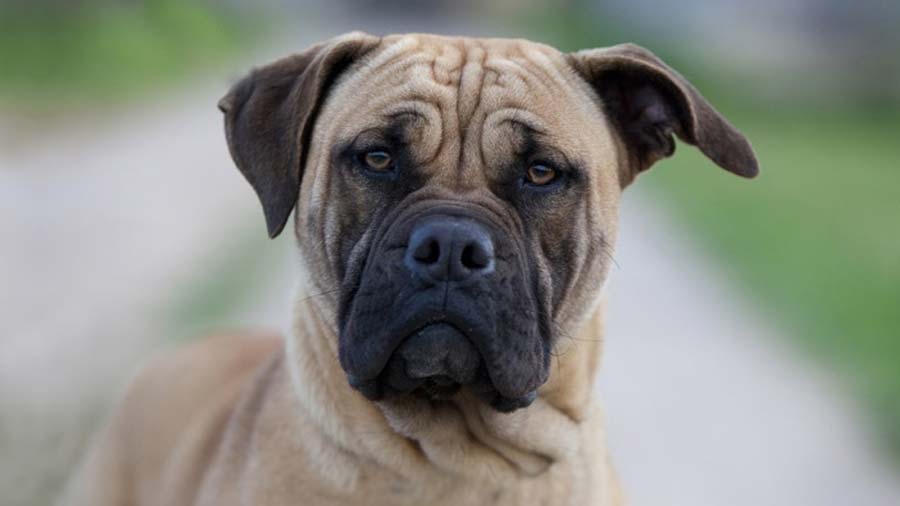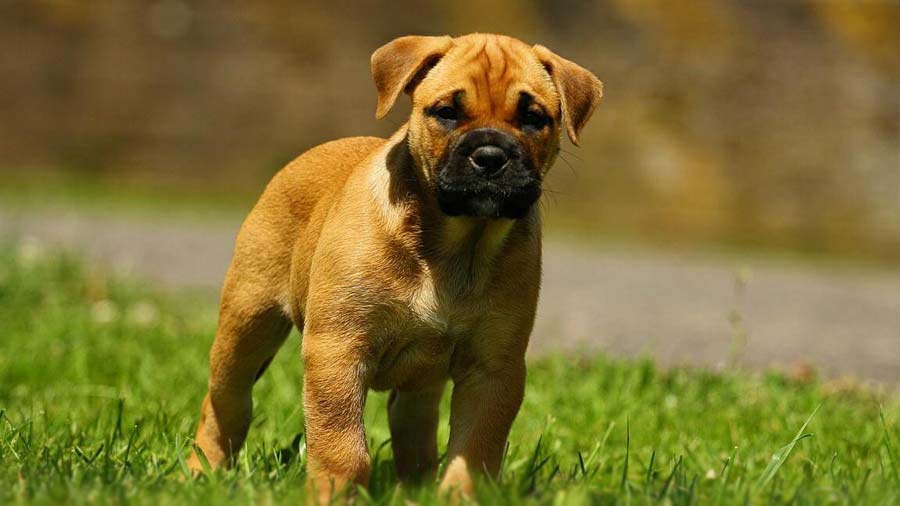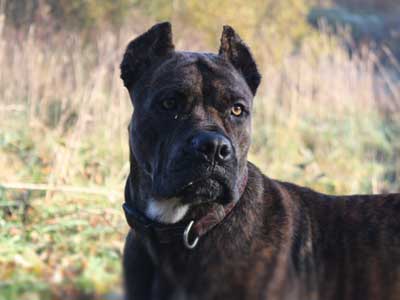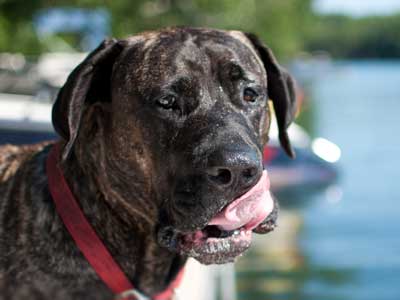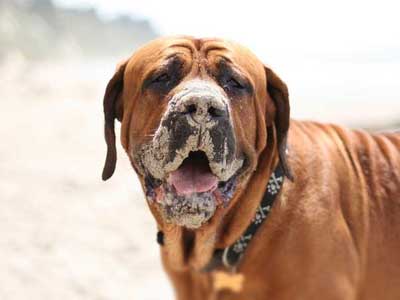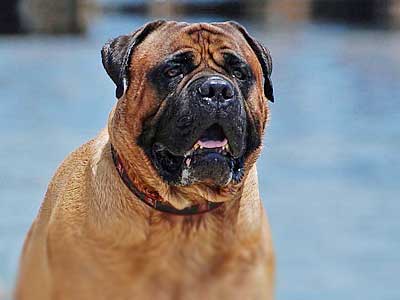Perro de Presa Mallorquin
Breed Information |
|
|---|---|
| Popularity |
2022: # 2021: # 2020: # 2019: # 2018: # 2017: # 2016: # 2015: # |
| Name | Perro de Presa Mallorquin |
| Other names | Ca de Bou, Mallorquin Mastiff, Mallorquin Bulldog, Perro Dogo Mallorquin, Majorca Mastiff, Majorcan Bulldog, Silverbacks |
| Origin |  Spain Spain |
| Breed Group | Guardian Dog (UKC) |
| Size | Medium |
| Type | Purebred |
| Life span | 10-12 years |
| Temperament |
Brave Courageous Loyal Quiet Self-assured |
| Height |
Male: 21-22 inches (55-58 cm) Female: 20-21 inches (52-55 cm) |
| Weight |
Male: 77-83 pounds (35-38 kg) Female: 66-74 pounds (30-34 kg) |
| Colors |
Black Brindle Fawn |
| Litter Size | 2-5 puppies |
| Puppy Prices |
Average $1500 - $2500 USD
|
Breed Characteristics |
|
|---|---|
| Adaptability |
2 stars |
| Apartment Friendly |
1 stars This breed will do okay in an apartment if it is sufficiently exercised. They are very active indoors and will do alright without a yard provided they get enough exercise. |
| Barking Tendencies |
2 stars Occassional |
| Cat Friendly |
1 stars |
| Child Friendly |
2 stars Not Good with Kids: In isolation, this dog breed might not be the best option for kids. However, to mitigate the risks, have the puppy grow up with kids and provide it with plenty of pleasant and relaxed experiences with them. |
| Dog Friendly |
1 stars |
| Exercise Needs |
3 stars This breed needs to be taken on a daily, brisk, long walk or jog. While out on the walk the dog must be made to heel beside or behind the person holding the lead, as in a dog's mind the leader leads the way, and that leader needs to be the human. |
| Grooming |
2 stars Low Maintenance: Infrequent grooming is required to maintain upkeep. No trimming or stripping needed. |
| Health Issues |
4 stars Hypoallergenic: No |
| Intelligence |
3 stars Ranking: (N/A) Full Ranking List |
| Playfulness |
3 stars |
| Shedding Level |
1 stars This breed requires minimal grooming. |
| Stranger Friendly |
2 stars |
| Trainability |
3 stars Moderately Easy Training: The Mudi is average when it comes to training. Results will come gradually. |
| Watchdog Ability |
5 stars |
Perro de Presa Mallorquin Names |
||
|---|---|---|
| Rank | Boy Names | Girl Names |
| 01 | Buddy | Chloe |
| 02 | Teddy | Bella |
| 03 | Toby | Emma |
| 04 | Jack | Luna |
| 05 | Louie | Abbie |
| 06 | Cody | Ellie |
| 07 | Milo | Lulu |
| 08 | Oscar | Stella |
| 09 | Lucky | Lexi |
| 10 | Bailey | Penny |
| 100 Cute Puppy Names › | ||
Overview |
|---|
|
According to the FCI standard, The Perro de Presa Mallorquin should be a medium-sized, typical molosser with a slightly rectangular build. It is strong and powerful, with a deep and wide chest and a somewhat slimmer croup. The skin is thick and somewhat loose, but must not form folds except for a minor one on the throat. The head is powerfully built and in males, the circumference of the skull should exceed the height of the dog. They have strong jaws with a very mild underbite, and widely spaced canines. The tail is set low, thick and is carried in a slight arch when the dog is moving. This is an intelligent dog who needs an owner who can understand and handle it. Owners should work with their Perro de Presa Mallorquin from puppy hood to teach obedience and manners in as positive a way as possible but correcting any unwanted behaviour from the beginning. Working with knowledgeable trainers is critical. |
History |
|
Since ancient times, seafaring from east to west in the Mediterranean region has led to the exchange of culture and science between nations. These reciprocal relations, even though mainly of a commercial nature, also gave the opportunity for an exchange of domestic animals. Amongst these were watch and guard dogs which were needed in harbors and coastal settlements as a protection against pirates and robbers coming in by sea. Amongst these mostly large, strong, resistant dogs with large heads and powerful teeth, one type distinguished itself. It was the mastiff of the Iberian Peninsula, which, in Spain, was used in various areas as a hunting or as a fighting dog against bulls and other dogs. This breed accompanied King Jacob I on his conquests and arrived in the Balearics about the year 1230. In the 17th century, Minorca and others areas came into British possession, following the treaty of Utrecht. The British brought their own fighting and guard dogs with them into the Balearics and crossed them with the native mastiffs of the Iberian Peninsula, which also occurred in the Balearic Isles. In the beginning of the 18th century, fights between dogs and bulls (bull baiting) were very popular and the Britons inhabiting the Island looked for a breed which would be held suited to such fights. These circumstances explain the name “Ca de Bou,” (Bull Dog). In the Spanish Stud Book for the year 1923, the existence of this breed is already established. The first official entry was in the year 1928 and in 1929, when such a breed was exhibited for the first time at a dog show in Barcelona. |
